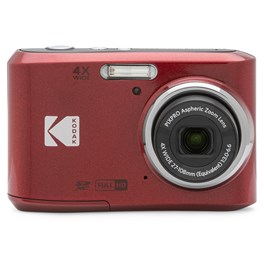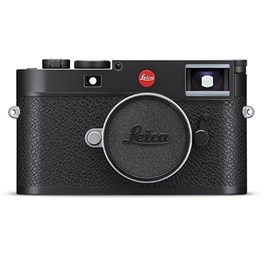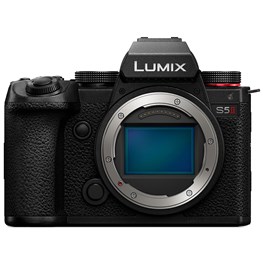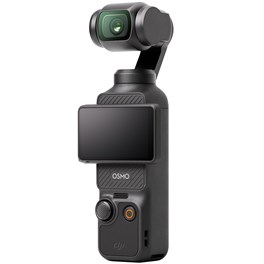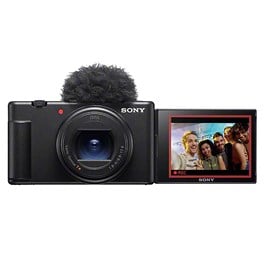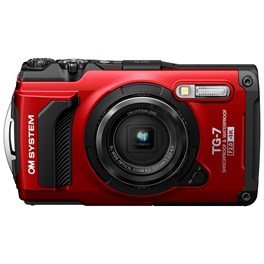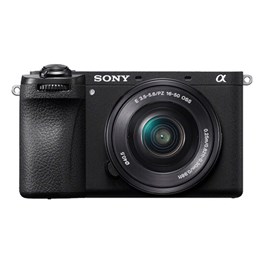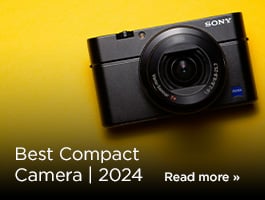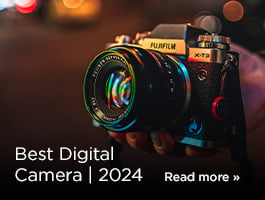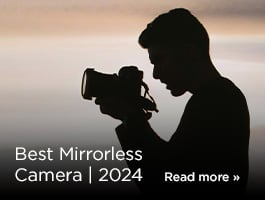
In our guide to the best digital cameras, we’re looking across all categories and styles of camera to try to come up with the ultimate list for all users. From full-frame mirrorless to affordable compacts, from rugged DSLRs to wearable action cameras, we’ve taken a look right across the spectrum to bring you what we reckon are some of the best cameras you can buy right now.
Of course, all users are going to be looking for something slightly different, so to help we’ve divided this guide up into sections — you can use the buttons below to jump straight to the section most relevant to you. We’ve made sure to include cameras at a range of price points, including some very affordable budget options, and in many cases we have reviewed these cameras in detail on our YouTube channel.
If you’re looking for a more specific type of camera, we have dedicated guides to the best mirrorless cameras and the best compacts. Otherwise, read on as we count off the best digital cameras — of all kinds — that you can buy right now…
Best Digital Camera under £200
Photography and videography can be expensive pursuits – but they don’t have to be. There are ultra-cheap cameras out there to suit the user with an extremely limited budget, so don’t be discouraged from pursuing image-making if you’re having to count the pennies in these times of skyrocketing living costs.
Buying cheap cameras can still mean getting a great set of features for casual photography. Many cheap compacts have generous optical zoom lenses, full-size LCD screens, decent burst rates and plenty more besides. And in the world of video, there are also ultra-cheap camcorders that can provide top-notch quality at the tiniest fraction of the price of a high-end kit.
We’ve picked out our favourite cameras for under £200 that you can buy right now. For casual use at home and on holiday, these are great choices. After all, as photographers are fond of saying, the best camera is always the one you have on you…
Kodak Pixpro FZ45 Digital Camera - Red
The Kodak Pixpro FZ45 Digital Camera - Red is a beginner-friendly, compact camera with intuitive features. The impressive 16MP CMOS sensor delivers high-quality images, and you can record every detail with 1080p full-HD video. It has one-touch video, red-eye removal, helpful shooting modes, and a bright 2.7-inch LCD screen to view your images and videos, allowing you to shoot confidently.
£94.00 View
|
Pros:
Cons:
|
Sensor: 16MP CMOS Lens: 4x optical zoom, 27mm wide-angle Video: 1080p Full HD Display: 2.7-inch LCD Battery: AA (x2) with around 200 shots per charge |
Pocketable compact cameras like the Kodak Pixpro FZ45 are a much less common sight than they used to be, which is why it’s great to see cameras like this still hitting the market. For a two-digit price tag, you get a capable little shooter with a 4x optical zoom lens, 16MP of resolution and 1080p Full HD video. It even packs in newer features like Face Detection to help with getting sharp shots of people, and the generously wide minimum focal length of 27mm equivalent helps get everyone in the frame when it comes time to take group shots.
Weighing just 117g, the Kodak Pixpro FZ45 is a camera you can easily carry everywhere with you. Something you might want to bring with you though is a clutch of spare AA batteries – or even better, a set of rechargeables – as the FZ45 is rated to about 120 shots per charge.
Kodak Pixpro WPZ2 Digital Camera - Blue
The Kodak Pixpro WPZ2 Digital Camera snaps 16-megapixel images and supports 1080p full HD video recording in a rugged, waterproof, and shock-proof casing. Enjoy 4x optical zoom and multiple shooting modes with image stabilisation. Connect to WiFi for effortless sharing and never miss a moment thanks to the rechargeable lithium-ion battery, which can capture up to 2000 shots or 70mins of video.
£159.00 View
|
Pros:
Cons:
|
Sensor: 16.35MP BSI CMOS Lens: 27mm-108mm f3.0-6.6 (equiv.) Stabilisation: Digital image stabilisation Video: 1080p/30fps Durability: Waterproof to 15m, shockproof to 2m |
For adventurous photographers, a tough compact like the Kodak Pixpro WPZ2 is a perfect companion. Waterproof down to 15m, shockproof to 2m and sealed against dust and grit, this hardy number can take a punishment and keep on shooting. Also, with a built-in rechargeable lithium-ion battery, it’s rated to up to 2,000 shots or 70 minutes of video, which it captures at a maximum resolution of 1080p Full HD at 30p.
There are also quite a few useful scene modes on the Kodak Pixpro WPZ2, in which it will automatically optimise its settings for specific situations. As well as face-detection, there’s also smile- and blink-detection to improve your group shots, and we like that there’s stabilisation to help with blur-free shots. Just bear in mind that it’s digital stabilisation, not optical, and so will result in a crop being applied to your shots. Keep compositions nice and central and you’ll be fine.
Best Digital Camera for Photos
Pretty much all digital cameras these days will shoot both photos and videos. This is great – having plenty of options is no bad thing, and more and more users these days are becoming hybrid content creators, with a foot in both camps.
All the same, some people are photographers first and photographers only. This section is for you guys – the image appreciators, those who are in search of the Cartier-Bresson-Esque decisive moment. We’ve picked out the modern best digital cameras for photos, the models that go above and beyond to offer photographers a superior picture-taking experience.
Any of the cameras across this entire guide can take a great picture – they’re all the best digital cameras, after all. However, the models in this particular section offer something a little better for photographers, and if still imagery is your passion, this is where you want to be.
Nikon Zf Digital Camera with 40mm SE Lens
The Nikon Zf combines a heritage-style design with advanced Z series technology to create the perfect fusion of past and present. Although beaming with nostalgia, Nikon has powered the Zf with a 24.5MP full-frame sensor, an EXPEED 7 processor, 4K video recording, and an 8-stop 5-axis VR system. This comprehensive kit also includes a 40mm f2 SE lens to maximise sharpness, speed, and precision.
£1,949.00 View
|
Pros:
Cons:
|
Sensor: 24.5MP full-frame CMOS Lens Mount: Nikon Z mount Video: 4K/30p oversampled from 6K, 1080p/120p ISO Range: 50–204,800 Dual Card Slots: UHS II SD and microSD (UHS I speed) |
The super-cool Nikon Zf mirrorless camera represents something of a do-over – the Df DSLR, released back in 2013, was a similar concept that didn’t quite take off. The Nikon Zf is a super thing – retro on the outside, all-new on the inside. So, you get tremendous styling that hearkens back to classic film cameras like the Nikon FM2. But you also get cutting-edge shooting features, including some of the best low-light performance we’ve seen in a full-frame camera.
The Nikon Zf does terrifically at high ISO settings, and also boasts Nikon’s Vibration Reduction stabilisation system which provides up to eight stops of effective compensation. There are also loads of attractive colour profiles to rival Fuji’s Film Simulations, particularly in monochrome – this is one of our favourite cameras for shooting in black and white currently. A triumph of design and imaging, the Nikon Zf is a gorgeous entry into the mirrorless Z series.
OM SYSTEM OM-5 Digital Camera with 12-45mm F4.0 PRO Lens - Black
This compact and durable micro four-thirds camera is ready for any adventure, boasting IP53-rated protection, up to 7.5EV steps image stabilisation, a 20.37 million effective pixel Live MOS sensor and a high-performance TruePic IX image processing engine. Combined with the 12-45mm f4 PRO Lens built for high resolution, this comprehensive kit is perfect for capturing highlights and making memories.
£999.00 inc. Cashback View
|
Pros:
Cons:
|
Sensor: 20.4MP Live MOS sensor Lens Compatibility: Micro Four Thirds Stabilisation: 5-axis in-body image stabilisation Video: 4K video recording at up to 30fps Durability: Weather-sealed body |
OM System, the regeneration of the brand formerly known as Olympus, comes out swinging with its difficult second album (well, camera), the glorious OM System OM-5. There are so many exciting features for photographers in this enthusiast-focused camera that it’s hard to know where to start.
Should we talk about the powerful stabilisation that can work in tandem with lens IS to deliver up to 7.5EV of effective compensation? Or how about the modes enabled by that system, such as the High-Res Shot mode, which can stitch together multiple images taken with the 20.37 million effective pixel Live MOS sensor, and make them into one 50MP super-image. And the fact that you can do that hand-held? Maybe we should talk about the IP53 splashproof rating that makes the OM-5 brilliantly weather-resistant or the dedicated Starry Sky AF feature that opens up new possibilities for astrophotography.
There are a couple of limitations worth being aware of, like the fact that the buffer at 30fps only gives you a maximum of 18 RAWs or 30 JPEGs (it gets better at 10fps when using the mechanical shutter). But the OM-5 really should be commended for how it encourages the photographer to experiment and try things out – and having access to the huge catalogue of Micro Four Thirds lenses makes it even better.
Leica M11 Digital Camera Body - Black
Presenting the Leica M11. This Full-Frame BSK CMOS Sensor camera with Triple Resolution Technology joins the highly regarded Leica M family, maintaining Leica’s world-renowned standard of image quality and performance. Now leading the charge, this camera merges modern photography with its grand and classic past, offering a familiar design with the latest in imaging technology.
£7,800.00 View
|
Pros:
Cons:
|
Sensor: 60MP BSI CMOS sensor Lens: Leica M-mount compatible lenses ISO: 64-50,000 Shutter Speed: 1/16,000 to 1 hour (electronic shutter) Storage: 64GB internal memory and SD card slot |
Okay, this is a luxury. But we couldn’t close out our section on the best digital cameras for photography without a shout-out to one of the best photographic experiences you can get right now. The Leica M11 is a gorgeous feat of imaging engineering – blending the classic styling of a rangefinder camera with a cutting-edge 60.3MP full-frame BSI CMOS sensor. Though of course, it’s really three sensors in one, with its “Triple Resolution” design allowing you to switch between 60, 30 and 18 megapixels, according to what the situation demands.
Rangefinder focusing is a tricky discipline. It’s an entirely manual experience, contained within the viewfinder, and while it’s certainly not for everyone, if you take the time to learn, it can be a fantastically fast and responsive form of photography.
Images, of course, look fantastic in a range of conditions. The Leica M11 will handle anything you throw at it with aplomb, and even throws in some quality-of-life extras like the 64GB of internal storage in addition to the memory card slot. Granted, shooting 60MP files will eat through that quite quickly, but dial down to 18MP and that’s more than 1,000 shots.
Best Digital Camera for Video
Whether you’re an amateur vlogger or a seasoned professional filmmaker, you have more choices than ever when it comes to the best camera for video. It has gone from being an optional afterthought to an integral aspect of almost every new digital camera that is released.
Bear in mind that in this guide, we’re talking exclusively about consumer digital cameras such as compacts and mirrorless. If you’re looking for something more high-end, you’ll want to browse our extensive range of professional filmmaking camcorders.
While there are loads of great professional options for video, we’ve kept this guide accessible to those working with a range of budgets. Filmmaking shouldn’t be gated off to only those with a lot of cash to spend, so you’ll find affordable cameras here mixed in with the premium stuff. We’re more than happy to recommend an older camera if we think it still delivers for a modern user. So let’s take a look at the best digital cameras for video!
Panasonic Lumix S5 II Digital Camera Body
A step above its predecessor, the Panasonic Lumix S5 II provides incredible performance. A first for Lumix cameras, Hybrid Phase Detection Auto-Focus detects subjects in difficult conditions and offers all-around AF improvements. The 24-megapixel full-frame sensor can record 6K video internally and up to 180fps in Slow & Quick capture. With other powerful functions, this is a versatile camera.
£1,349.00 View
|
Pros:
Cons:
|
Sensor: 24.2MP full-frame CMOS Lens Mount: L-mount Stabilisation: 5-axis in-body stabilisation Video: 4K/60p Viewfinder: 3.68 million-dot OLED |
The powerful Lumix S5 II brought a feature that Panasonic shooters had long been crying out for – phase-detection autofocus. This is a big improvement over previous Panasonic models, in both the full-frame Lumix S and Micro Four Thirds Lumix G lines, and makes for a much-improved shooting experience in both stills and video. Speaking of video, the S5 II offers a huge suite of options, including 4:2:0 10-bit 6K video at 30fps, 4K at up to 60fps, high-frame-rate shooting at 120fps, and plenty more.
The rugged body design of the Lumix S5 II is great, with plenty of control dials and buttons that allow you to extensively customise and get the camera working the way you want it to. Having access to the L-mount range of lenses is also no bad thing, with plenty of standout optics made by Sigma and Leica as well as Panasonic’s own lenses.
DJI Osmo Pocket 3
The DJI Osmo Pocket 3 is a compact 4K action camera with a 1" CMOS sensor and gimbal stabilisation. The 2" rotatable touchscreen seamlessly transitions between vertical and horizontal modes, whilst Fast Focusing and ActiveTrack guarantee smooth, stable footage during dynamic movements. Slow motion mode offers impressive 4K/120fps capabilities, ensuring every detail is captured, even in low light.
£459.00 View
|
Pros:
Cons:
|
Sensor: 1-inch CMOS Lens: f1.8, 80° field of view Video: 4K at 120fps Stabilisation: 3-axis mechanical gimbal Audio: Four-microphone array with noise cancellation |
The DJI Osmo Pocket 3 is a fantastic option for both beginners and enthusiasts looking to explore and capture high-quality video. The 1-inch CMOS sensor ensures stunning image quality, even in lower light, and its 4K video at 120fps offers cinematic clarity with smooth, high-frame-rate footage. The 3-axis gimbal is perfect for stabilising your shots, making it ideal for handheld use, while the four-microphone array ensures that your audio is clear and crisp, even in outdoor or noisy environments.
For those new to video creation, the ActiveTrack 6.0 feature makes tracking moving subjects a breeze, so you can focus on your content without worrying about keeping the shot steady. The compact size makes it easy to carry, and it offers a level of versatility that is hard to find in similarly priced cameras. Whether you're shooting travel vlogs, action scenes, or just everyday moments, the Osmo Pocket 3’s combination of features makes it an excellent choice for achieving professional-level video in a small package
Sony ZV-1 II Digital Camera
Sony continues to put users at the centre of all they do by introducing the ZV-1 II compact digital camera. Taking feedback from original ZV-1 users and reinventing their concept to streamline the Sony vlogging experience, the ZV-1 II comes equipped with a wider 18-50mm f1.8-4.0 lens, Cinematic Vlog settings, an upgraded 3-capsule mic with customisable directivity, and more intuitive touch controls.
£769.00 inc. Cashback View
|
Pros:
Cons:
|
Sensor: 20.1MP 1-inch Exmor RS CMOS Lens: 18-50mm f1.8-2.8 (equiv.) Stabilisation: Optical SteadyShot image stabilisation Video: 4K at 30fps Connectivity: USB-C streaming, 3.5mm microphone input |
This updated compact is part of Sony's ZV series, which includes both compacts and mirrorless cameras that are designed specifically for vlogging. The ZV-1 II, as the name implies, is an upgraded sequel to the original ZV-1, responding to feedback from users that they wished the lens on that camera could go a little wider than 24mm. Their wishes have been granted, with the ZV-1 II sporting a 18-50mm f1.8-4.0 zoom lens to ensure that plenty can be fit in the frame.
Video-wise, the ZV-1 II records 4K 30p or Full HD at up to 120p. Like its predecessor, it also has an impressive built-in three-capsule mic setup that records much better audio than you’d usually get from an in-camera mic. Handily, the camera also comes bundled with a windshield, useful for muffling unwanted noises when you’re shooting out on location.
Best Entry-Level Digital Camera
A good entry-level digital camera really should do two things. It should be easy to use, enough that a beginner can pick it up and start shooting without a steep learning curve. However – and this is the really crucial point – a great entry-level camera also needs to offer substantial room to grow and develop. An easy-to-master camera is all very well, but if the user is going to start chafing against its limitations after a few months, then it isn’t doing its job properly.
So, the best entry-level digital cameras we’ve picked for this section strike a balance between both. These are user-friendly cameras that even a novice photographer will be able to get to grips with, but they also offer plenty of imaging scope and room to develop. With decent-sized sensors, solid ergonomics and great lens options, each one represents a significant step up over a smartphone and makes for a perfect first step into serious photography.
Fujifilm X-M5 Digital Camera Body - Silver
The Fujifilm X-M5 is purpose-built to empower creators and help enhance their content. With an X-Trans BSI CMOS sensor and X-Processor 5, the X-M5 delivers impressive 26.1MP images, 12-bit ProRes RAW/BMD recording, and 6.2K 30p open gate video. Its advanced autofocus, dedicated vlogging modes, and control dial with 20 film simulations make the X-M5 the perfect gateway to professional-grade production.
£799.00 View
|
Pros:
Cons:
|
|
Small, portable and impressively affordable — the Fujifilm X-M5 immediately ticks a lot of boxes for an entry-level camera. For the price, it has a particularly impressive video spec; there aren’t many sub-£1000 cameras out there capable of shooting open-gate 6.2K 30p 4:2:2 10-bit video, while also supporting 4K 60p and Full HD 240p. Indeed, as you might have gleaned, the Fujifilm X-M5 is a camera that’s tilting itself towards vloggers — pure stills shooters looking for an entry-level Fujifilm option may want to consider the Fujifilm X-T30 II instead, which offers a viewfinder.
The X-M5 is one of the most affordable routes into the Fujifilm X system, and once you’re in, you can enjoy all the well-publicised perks. It comes packing the latest Fuji Film Simulation modes for stylish JPEG images in the vein of classic film stocks. Then there’s also the X-mount lens range which is absolutely chock-full of sophisticated, stylish, high-quality lenses capable of producing beautiful bokeh.
Olympus OM-D E-M10 Mark IV Digital Camera with 14-42mm lens - Silver
The Olympus OM-D E-M10 Mark IV is a compact, lightweight and impressive camera body that is designed with travelling and mobile creatives in mind. It features a redesigned grip, faster and more precise AF, and powerful 5-axis image stabilisation which together allow you to have a steady hand and be able to capture the action in front of you in stunning detail without camera-shake. It comes with a useful flip-down LCD monitor which makes for well-composed selfies and vlogs. Equally, it has a high-definition EVF that provides you with real-time settings and a crystal clear image. This kit comes with Olympus' beautiful M.Zuiko Digital ED 14-42mm f3.5-5.6 EZ Lens. This lens is impressively compact yet has a versatile field of view which matches the camera's lightweight frame. With edge-to-edge sharpness, you'll easily and effectively capture the scene in front of you.
£749.00 View
|
Pros:
Cons:
|
|
Though we’re yet to see the refreshed OM System brand deliver its own entry-level camera, for now, the Olympus iteration is still a really solid choice. The Olympus OM-D E-M10 Mark IV is a little camera with a lot of depth to it and makes for a stand-out entry-level choice for the novice user.
It pairs a capable 20MP sensor with an effective image stabilisation system that makes it much easier to get sharp shots hand-held, even when the light grows dim. Having the huge catalogue of Micro Four Thirds lenses is also a boon – there are plenty of pancake primes that pair brilliantly with the lightweight E-M10 IV. One thing to note – given that it lacks a 3.5mm mic port, and its 4K video tops out at 30p, it’s probably not one for budding videographers.
Canon EOS R10 Digital Camera with 18-45mm Lens
As an entry-level bundle, the Canon EOS R10 with 18-45mm Lens is the perfect next step in your photography career. Whether you’re moving on from a smartphone or upgrading your DSLR, the EOS R10 provides more room for creativity with features like 23/30fps bursts, a Dual Pixel CMOS autofocus II system, 4K Video Recording, a powerful DIGIC X Processor and more – the only limit is your imagination.
£999.00 View
|
Pros:
Cons:
|
|
Canon has cleverly put together a very enticing package here. The Canon EOS R10 is an APS-C camera that represents a great jumping-on point for the firm’s flagship mirrorless EOS R system. Appealing and accessible, the EOS R10 looks a lot like another camera from this section, the good old EOS 250D. Only the difference is, the EOS R10 comes packing a lot of the latest features, like the Dual Pixel CMOS AF II system inherited from the big pro cameras like the EOS R3. Having 4,053 AF points on a camera at this level is a pretty big deal!
The RF-S lens range of optics designed specifically for APS-C sensor has grown, and while there still aren’t a huge number, there are some quality lenses available that’ll balance well with the EOS R10. Plus, you can always use full-frame RF lenses, or any EF-S lenses you own if you have the correct EF-EOS R adapter.
Best Digital Camera for Ease of Use
Well, who doesn’t love gadgets that are just plug in and play? If you don’t want to fuss with swapping lenses, don’t particularly care to learn the exposure triangle, and at heart just want a solid point-and-shoot camera that delivers high-quality images with minimal fuss, this is the section for you.
Compact cameras – a term meaning cameras with fixed lenses that can’t be changed – are a great way to give yourself a quality upgrade from a smartphone without the bulk and expense of a whole system of lenses. Many manufacturers lean into the natural convenience of compact cameras, and make them super user-friendly, with high-quality zoom lenses that give you real shooting flexibility. That also makes these cameras excellent for travel, no matter whether you’re exploring the city or tramping through the countryside.
So, without further ado, here are our favourite digital cameras for ease of use.
GoPro HERO13 Black
HERO13 Black is the camera for every creator. In addition to best-in-class 5.3K60 video and legendary GoPro durability, it’s compatible with new HB-Series Lenses. These lenses expand your capture capabilities for the most immersive POV shots, the ability to focus closer than ever, easy-to-achieve motion blur, and cinematic anamorphic footage. A new more powerful Enduro battery extends recording time in all weather conditions, while an updated mounting system gives HERO13 Black more mounting flexibility than any GoPro before it. With essential GoPro features including award-winning HyperSmooth 6.0 video stabilisation, automatic highlight videos and the ability to auto upload your footage to the cloud, HERO13 Black is a powerful combination of leading-edge tech and endless creative possibilities.
£339.00 View
|
Pros:
Cons:
|
|
You can’t beat action cameras for ease of use, but the GoPro HERO13 Black also offers a wealth of shooting options for those who like to dig deeper into settings, giving you the best of both worlds. It shoots beautifully clean and crisp video at up to 5.3K resolution, and its larger 8:7-format sensor makes it easy to shoot in different aspect ratios. This is especially useful if you need to produce vertical versions of your video content, as more and more of us need to do nowadays.
This latest GoPro inherits the beefed-up battery life and exceptional HyperSmooth stabilisation of its predecessors. Waterproof down to 10m (this can be extended with a housing), it’s a hardy camera that’s perfect for beach holidays, white water rafting, skydiving, mountain biking or whatever else you might want to throw at it — especially thanks to the newly improved slow-motion capabilities.
OM SYSTEM Tough TG-7 Digital Camera - Red
Venture further, dive deeper, and unveil more detail with OM SYSTEM’s Tough TG-7 12MP digital camera. Lightweight, compact, and rugged enough for outdoor enthusiasts, the TG-7 is waterproof to an impressive depth of 15m, shockproof to 2.1m, crushproof up to 100kg, and freezeproof at -10°C. It also boasts 4K video, an f2 wide 25-100mm 4x optical zoom lens, and a 12-megapixel backlit CMOS sensor.
£424.00 inc. Cashback View
|
Pros:
Cons:
|
|
OM System has been slowly but steadily updating the various camera lines that were previously marketed under Olympus. We were very pleased to see a new entry in the Tough TG compact line, the TG-7, as this has long been considered one of the best series of waterproof compacts on the market. With a 25-100mm equivalent lens, the TG-7 gives you real compositional flexibility, and its body is tough as they come: waterproof down to 15m, shockproof up to 2.1m and crushproof up to 100kgf.
One of the things that makes the TG-7 so easy to use is the fact that it offers loads of shooting modes, including ones that are specifically designed to work underwater. It has pretty decent close-up capabilities for a camera of this type, and is a great choice to take snorkelling or diving and capture all the strange and wonderful things you see.
Canon PowerShot Zoom Essential Kit - White
This pocket-size super zoom camera offers an expansive 100mm or 400mm focal length, as well as a 2x digital zoom to expand the range to an incredible 800mm. With the capacity to record full-HD video and 12.1 MP still-images, the Canon PowerShot Zoom is ideal for outdoor adventures, wildlife enthusiasts, bird watchers, and family days out. Implements key image stabilisation and USB charging.
£289.00 View
|
Pros:
Cons:
|
|
It’s what it sounds like – a camera that’s built to zoom. Canon has been making some interesting moves in the compact camera space, jettisoning the traditional camera form factor and coming up with some innovative concepts. One that we particularly like is the Canon PowerShot Zoom, which is a tremendous pick for birders and wildlife enthusiasts who want something simpler than a traditional camera.
Able to zoom to 100mm, 400mm and 800mm equivalents, the PowerShot Zoom specialises in bringing distant subjects close. Its 12.1MP stills resolution is lower than most current cameras, but still produces images with enough quality for sharing online. Video-wise, it can capture Full HD footage, and the inclusion of 4-axis stabilisation makes it easier to get sharp results in both stills and video modes. Weighing just 145g, it’ll slip easily into your pocket, and makes for a tremendous hiking companion.
Best All-Rounder Digital Camera
For our final section, we’re rounding up the cameras that we believe are best for a bit of everything! More and more content creators are diversifying their skill sets and dipping their toes into all sorts of disciplines, which is amazing to see – and these are the cameras that will keep up! For photos, for video, for fast shooting, for printing, for daytime, for night – these are the cameras that will tackle it all.
We’re aware too that many content creators are working on limited budgets. We could easily fill this list with professional flagship cameras like the Nikon Z9 or Sony A1, which really can do everything – but we’re aware that it would only be useful to a limited number of people. So, we’ve made an effort to balance in price when making our picks, and have come up with the cameras we feel strike the best overall balance. So, here we go – the best all-rounder digital cameras!
Canon EOS R5 Mark II Digital Camera Body
The Canon EOS R5 Mark II sets a new standard for visual storytelling with industry-leading technology for hybrid creators. It combines a revolutionary 45MP back-illuminated stacked sensor with DIGIC Accelerator technology, rapid speeds of up to 30fps, and 8K60P RAW video recording to deliver a genre-defying mirrorless body that will help professionals achieve their most creative ambitions yet.
£4,499.00 View
|
Pros:
Cons:
|
|
The R5 II could easily be in the top cameras for photography and video separately. But for that reason, we’ve placed it here in the all-rounders. At the heart of this full-frame mirrorless camera is the “accelerated capture” architecture, featuring dual DIGIC Accelerator and DIGIC X processors. With deep-learning AI algorithms, the camera can upscale its 45MP resolution to 180MP, allowing detailed cropping without loss of quality. The sensor is now stacked and back-illuminated for faster readouts. Enhancements include improved IBIS with up to 8.5 stops, a high-resolution viewfinder, a maximum shutter speed of 1/64,000sec, and a burst rate of 30fps, plus advanced FTP for multiple image transfers.
There have been massive upgrades in autofocus including the Dual Pixel Accelerated AF system with 5,850 points for extensive coverage and low-light performance. AI-powered Subject-Detection and “Action Priority” features enhance focus for dynamic subjects. Eye Control AF tracks eye movements in the viewfinder for precision. Video capabilities are advanced, with 8K 60p RAW and 4K at 120p and 60p, multiple recording formats, and professional audio options. A notable feature is simultaneous recording, capturing photos and videos on separate cards, and enhancing workflows across the board.
Sony A6700 Digital Camera Body with 16-50mm Power Zoom Lens
Taking the advanced innovations of their full-frame and vlogging ranges, Sony combines their most successful tech to date into one compact, next-generation APS-C camera. The Sony A6700 is the first Alpha series camera to boast a powerful 26MP back-illuminated Exmore R CMOS Sensor, a BionZ XR Processing Engine, and an AI unit for extraordinary upgrades in speed, resolution, and subject recognition.
£1,549.00 View
|
Pros:
Cons:
|
|
A welcome update to Sony’s APS-C mirrorless range, the Sony A6700 is stuffed with impressive cutting-edge features. Its AI-powered subject-detection autofocus is some of the best in the business, able to lock onto specific subjects with uncanny accuracy – and keep hold of them even as they move. With a 26MP back-illuminated Exmor R CMOS sensor, the A6700 captures images of sublime quality, and it’s all wrapped in a package that’s much more affordable than most full-frame alternatives.
Sony’s APS-C E-mount series has been going for a while, and this combined with the firm’s historic openness to third-party lens development means that any prospective A6700 user is going to have lots of lenses to choose from. We also like the incorporation of touch controls in this model – borrowed from the vlogger-focused ZV series – which synergise well with the sensibly laid-out controls.
Nikon Z6 III Digital Camera Body
Тhе Nіkоn Z6 III joins thе еѕtееmеd Z range of cameras, соmbіnіng іnduѕtrу-lеаdіng tесhnоlоgу wіth speed and precision. Еquірреd wіth а 24.5MP partially stacked CMOS sensor, Еxpeed 7 рrосеѕѕоr, 6K RAW video and electronic/mechanical shutter, thе Z6 provides exceptional image quality for hybrid photography and filmmaking. Its 8-stop VR system and 5-axis IBIS ensure top-notch stability in any scenario.
£1,999.00 View
|
Pros:
Cons:
|
|
Nikon’s Z6 cameras have always been all-rounders — not quite as high-resolution as the Z7 series, not quite as fast as the speedy Z8, but pretty solidly good at everything. The Z6 III is the best refinement of this formula yet, and it’s a camera that can do basically anything without any serious compromises. Its full-frame sensor produces the kind of crisp image quality we’ve come to expect from Nikon’s mirrorless Z-series, and thanks to the partially stacked design of the sensor, the camera is capable of achieving dizzying shooting speeds. Are you likely to need 120fps burst mode very often? Probably not, but here it is!
With dual high-speed card slots, including one CFexpress and one SD UHS-II, the Nikon Z6 III is built to meet the demands of pro and serious enthusiast photographers and videographers. Its megapixel count of 24.5MP may sound a little low in this age of ever-higher resolutions, but unless you’re planning to make large prints, this is probably going to be fine.
|
Pros:
Cons:
|
|
The exceptional Fujifilm X-T5 is a sublime achievement in camera design, and possibly the best APS-C camera ever made (yeah, we said it). A long-awaited successor to the fabulous X-T4, the X-T5 boasts such cutting-edge features as subject-detection autofocus that’s powered by deep-learning AI, meaning it gets better the more you shoot. Then there’s also the 40MP resolution, which is ideal for making the most of those tack-sharp Fujifilm X-mount lenses.
While Fujifilm billed this camera as being all about photographers first and foremost, its video spec is really nothing to sniff at. There aren’t many cameras capable of shooting 6.2K video at 30 frames per second in 4:2:2 10-bit colour, with the option to externally record Apple ProRes RAW and Blackmagic RAW codecs. Then there’s also that gorgeous Fujifilm design, with loads of physical dials and controls, that simply makes the X-T5 a joyful object to own and use. A well-deserved triumph by Fujifilm, and an all-rounder camera for the ages.

Cameras
FAQs
How do I choose a digital camera?
There’s no one way to do it! This page has hopefully given you a rough guide, but it’s also worth browsing the best digital camera reviews, talking to other photographers, and perhaps even considering a short rental to try out a camera you’re considering buying.
What is the difference between DSLR and mirrorless cameras?
DSLR cameras use a mirror mechanism, providing an optical viewfinder, while mirrorless cameras rely on digital displays. Mirrorless cameras are generally more compact and offer faster autofocus.
How many megapixels do I need in a digital camera?
It all depends on what you're using the camera for. For most, a camera with 16-24 megapixels is sufficient for high-quality prints and online sharing.
Are smartphone cameras as good as digital cameras?
While smartphone cameras have improved significantly, digital cameras still offer superior image quality and advanced features. For demanding photographers, options like the Sony RX100 VII or the Canon PowerShot G7 X Mark III provide a compact but powerful alternative.
How do I transfer photos from my digital camera to a computer?
Most cameras use USB cables or memory card readers for data transfer. Some, like the Canon EOS M50, also support wireless transfer via Wi-Fi or Bluetooth, providing convenient options for different user preferences.
What is 4K video recording, and do I need it in a digital camera?
4K video recording provides higher resolution and better quality footage. But whether it's necessary depends on what you're going to use the camera for. Cameras from Panasonic and Sony are renowned for their exceptional 4K video capabilities, catering to videographers and content creators.
Where do digital cameras store their photographs?
Memory cards! Different digital cameras will have different card compatibilities, with some able to use faster cards with better transfer speeds, such as XQD or CFExpress.
What batteries do digital cameras use?
It varies, but the vast majority of digital cameras use rechargeable Li-Ion batteries, normally ones that the manufacturers supply themselves, though third-party options are often available. It’s a good idea to pick up spare batteries and chargers, and some high-end cameras also have optional battery grips, which pack in an extra battery to double the shooting time.
How do we decide?
Our in-house photography experts, store staff and partners all work collaboratively to pour over our guides and tips articles. We also consider emerging trends and customer feedback to make sure our guides are always up-to-date and reflective of what people are truly looking for. By curating only the best products, our guides provide trustworthy recommendations, making it easier for customers to make informed choices with confidence.
If you would like more advice on any purchase our contact centre staff are here to help. Alternatively, you can reach us via email or social media. And don't forget. If you were to purchase anything based on our recommendations you'll be covered by our full returns policy
